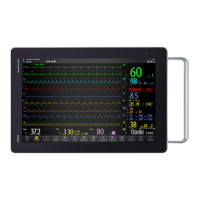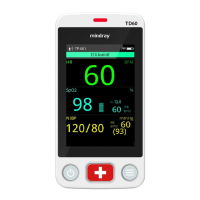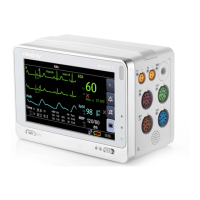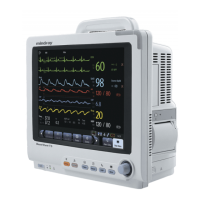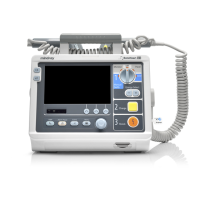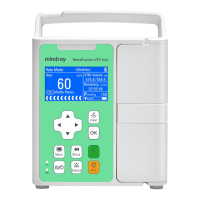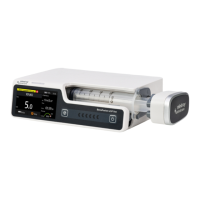7 - 12 BeneVision N1 Patient Monitor Operator’s Manual
7.6.4.4 Setting Thresholds for PVC-Related Alarms
PVC-related alarms are detected on the basis of the current PVC rate and the number of consecutive PVCs.
To set the required thresholds for PVC-related alarms, follow this procedure:
1. Select the ECG numeric area or waveform area to enter the ECG dialog.
2. Select the Arrhythmia tab → select the More Threshold tab.
3. Enter the password if required. For more information, refer to 21.12.3Selecting Password for User
Authentication.
Adjust V-Tach PVCs, V-Tach Rate, V-Brady PVCs, and V-Brady Rate as necessary to set the thresholds for the
desired PVC-related alarms.
The following figure illustrates the conditions under which PVC alarms will be generated if V-Tach PVCs is set to
6, V-Tach Rate is set to 130, V-Brady PVCs is set to 5, and V-Brady Rate is set to 40.
If both V-Tach PVCs and V-Tach Rate are greater than or equal to the limits, a V-Tach alarm is generated.
■ If the number of consecutive PVCs is lower than the V-Tach PVCs limit (6) but greater than 2, and PVC rate is
greater or equal to the V-Tach Rate limit (130), a Nonsus V-Tach alarm is generated.
■ If the number of consecutive PVCs is greater than or equal to the V-Brady PVCs limit (5), and PVC rate is
lower than the V Brady limit (40), a Vent Brady alarm is generated.
Extreme Tachy 65 bpm to 300 bpm
Extreme Brady 15 bpm to 115 bpm
Multif PVCs Window 3 beats to 31 beats
V-Tach Rate 100 bpm to 200 bpm
V-Brady Rate 15 bpm to 60 bpm
V-Tach PVCs 3 beats to 99 beats
V-Brady PVCs 3 beats to 99 beats
PVCs/min High 1 to 100
Pauses/min 1 to 15
Pause Threshold 1.5 sec, 2.0 sec, 2.5 sec, 3.0 sec
AF/Irr Rhy End Time 0 min, 1 min, 2 min, 3 min, 4 min, 5 min, 10 min, 15 min, 30
min
Arrhythmia Threshold Range

